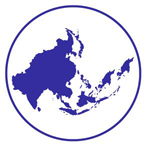Presentation Title
Perceiving Japan through Two Film Versions of "Madame Butterfly": The Dynamics of Power among Japan, China, Hong Kong, and the United States
Location
RCC Small Ballroom
Start Date
11-10-2013 1:45 PM
End Date
11-10-2013 3:15 PM
Abstract
“Madame Butterfly” is widely-known as a tragic opera composed by Puccini. The original story was a short novel written in the United States during the Japonisme boom at the end of the 19th century. In this story, an American naval officer in Nagasaki falls in love with a Japanese girl named Butterfly. When the officer brings his American wife to Japan, Butterfly loses hope and commits suicide. This story thus symbolizes the United States’ power vis-à-vis Japan.
In Shanghai, a Hollywood film called “Madame Butterfly” was shown in 1933. This came after the Manchurian Incident and the Shanghai Incident. According to the newspapers of Shanghai, the film “Madame Butterfly” had a good reception and a run of about half a year. In watching this film, the Chinese audience put themselves in the position of the American naval officer, imagining themselves beating a hostile country – Japan. After World War II, a film named “Madame Butterfly” was shown in Hong Kong in the mid-1950s.
In this paper, I compare the two film versions of “Madame Butterfly” – one produced in the United States, and one produced in Hong Kong. The aim of this paper in comparing these two versions of “Madame Butterfly,” is to analyze how the films demonstrate the balance of power among the United States, Japan, China, and Hong Kong in the 1930s and the 1950s.
Perceiving Japan through Two Film Versions of "Madame Butterfly": The Dynamics of Power among Japan, China, Hong Kong, and the United States
RCC Small Ballroom
“Madame Butterfly” is widely-known as a tragic opera composed by Puccini. The original story was a short novel written in the United States during the Japonisme boom at the end of the 19th century. In this story, an American naval officer in Nagasaki falls in love with a Japanese girl named Butterfly. When the officer brings his American wife to Japan, Butterfly loses hope and commits suicide. This story thus symbolizes the United States’ power vis-à-vis Japan.
In Shanghai, a Hollywood film called “Madame Butterfly” was shown in 1933. This came after the Manchurian Incident and the Shanghai Incident. According to the newspapers of Shanghai, the film “Madame Butterfly” had a good reception and a run of about half a year. In watching this film, the Chinese audience put themselves in the position of the American naval officer, imagining themselves beating a hostile country – Japan. After World War II, a film named “Madame Butterfly” was shown in Hong Kong in the mid-1950s.
In this paper, I compare the two film versions of “Madame Butterfly” – one produced in the United States, and one produced in Hong Kong. The aim of this paper in comparing these two versions of “Madame Butterfly,” is to analyze how the films demonstrate the balance of power among the United States, Japan, China, and Hong Kong in the 1930s and the 1950s.

Comments
Presentation is included in Panel 6: Between Politics and Culture: Asianism and Transnational Link among Hong Kong, Japan, and Korea in the Cold War